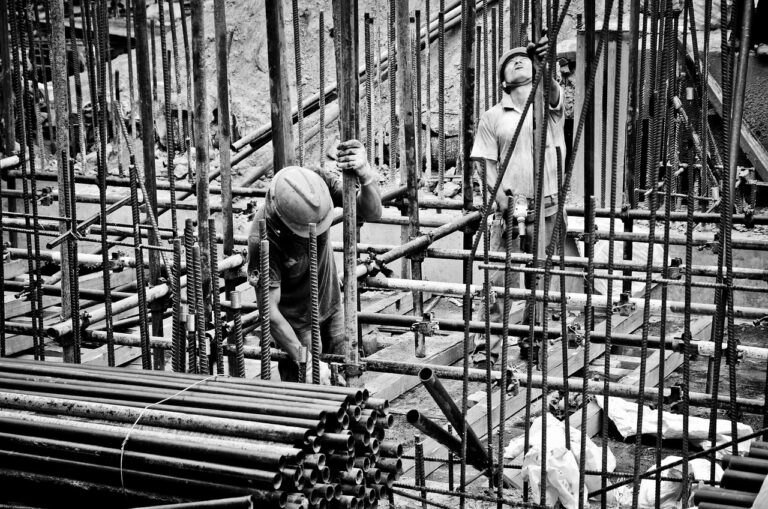When one thinks of developer work, thoughts of fast-tracked design, and accelerated fit-out for new or conversion projects come to mind. Developers typically maintain a different focus than construction managers or general contractors; they tend to focus on the long-view of a project from funding through leasing, whereas construction managers and general contractors focus heavily on the construction phase. This distinction marks the difference in the way different types of entities approach CPM scheduling.
The trajectory and critical path of developer work is substantially different than that of other building industry projects that construction managers or general contractors conduct. This is particularly true in the way the construction phase is approached. Developers typically require a concentrated sequence in the construction window that defies ready representation in a CPM schedule, but also obviates the need for one. In other words, despite a significant volume of work-load, many developers don’t really need a complex schedule to represent it, they simply bundle it.
This hands-off approach by developers is countered by the general building industry standards, which typically require project schedules as dictated in the engineer or architect’s project manual or specifications. Some of these requirements can be quite cumbersome and tedious, whereas developers have the luxury of writing their own specification standards- including project schedules: it is the rare occasion a developer even issues a schedule specification.
However; just as it is with general building, the caliber of a given developer project will also dictate the integrity of the schedule. Depending on the nature of the project and developer, schedules will vary widely in terms of degrees of sophistication. Smaller developers and those who don’t know better may eschew a construction schedule altogether. I wonder if this is because of past negative experience with schedulers, or just plain ignorance. Larger and higher order developers tend to make better choices from lessons learned. At a minimum, a developer will need a general construction schedule to issue to the bank.
Lending institutions require basic schedules for things such as loan draw-downs, and to monitor the financial pulse of a given project. Some developers (like some builders) merely issue a pro forma schedule simply as a formality, whereas others are very specific about maintaining high integrity and accuracy in their schedules: they actually use them for their intended purpose, which is to monitor the timeline of their project, track the project trajectory in a way that facilitates the financing of the project, and to be able to effect recovery changes (compression or resequencing that makes up lost negative float or delay). Accordingly, acquisition, planning, designing, building, and leasing are always represented in the critical path of my developer schedules.
Thus, developer construction schedules tend to be simpler and less sophisticated than other general construction works. For developer schedules, a front-end program such as MS Project will do the trick; or if you’re on a tight budget, you can download Team Gantt. Alternatively, if you are a professional scheduler, you will eschew such front-end programs in favor of those with more operability. Since developers tend to use simplified schedules, many of them create their own schedules in-house on programs such as Excel. Such schedules invariably lack the project logic to become a tool that they will use to effectively track the construction work at any level than a general one, but are easy enough to manage the developer’s critical path.
Nonetheless; delayed developer projects typically founder in the construction phase. Lacking a proper CPM schedule to track or recover delays, a delayed large multi-unit conversion can quickly spiral out of control, with no way of making an accurate forward pass, or defining new timelines. Without a properly configured and tracked CPM schedule, a developer’s scheduler will be hard put to resequence and recover a delayed construction sequence. Resultantly, as time goes, by carrying and construction costs escalate.
If a developer is self-performing the work he is less likely to have generated a high-level CPM schedule, whereas if the developer hires a construction manager to do the work, he should expect and demand a ‘proper’ schedule from the builder. Again, to a developer, a proper build-out schedule from a construction manager or general contractor need not be highly detailed, only accurate. Given the disparate levels of integrity of schedules one encounters in the industry, it behooves developers and owners to hire a consultant to vet their construction manager schedules.
My developer schedules take a fraction of the time to generate than any of my other CPM schedules. That does not mean they are any less exacting or critical. As I mentioned, many developers will only require or ask for the initial build-out schedule. These are typically abbreviated by, floor, unit, phase (rough/finish), or major trade or activity, what I call ‘bundling.’ They rely on general milestones and constraints, as opposed to the interior order of a multitude of activities and sub-activities. Thus, updates are a breeze; however, there is no getting under the hood, or making the most of the analytical tools that fuller schedules lend themselves to.
Given the typical simplicity and brevity, developer schedules and updates (if ever requested) provide one of the highest ROIs, for the lowest out-go, which makes schedules for developers a no-brainer. The abbreviated scope of the initial developer schedule roll-out should loosen up resources to make the schedule a little more sophisticated than is typically expected or warranted. A good scheduler will point this out to his clients, and suggest ways to make it more so.










